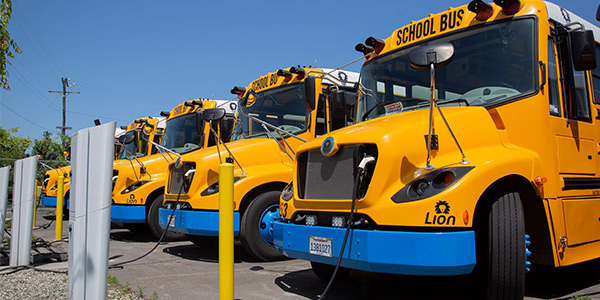California will need to double the pace of electric vehicle sales and install millions of chargers to meet its goal of having 5 million EVs on the road by 2030, researchers told the state’s Energy Commission (CEC) in four sessions on EV charging infrastructure last week.
The state will likely hit its midterm target of having 1.5 million zero-emission vehicles (ZEVs) by 2025, assuming 11% sales growth, said Joshua Cunningham, chief of the Advanced Clean Cars Branch at the California Air Resources Board (CARB), which regulates vehicle emissions.
But the pace of sales is projected to increase incrementally to 13%, which is not enough to meet the state’s long-term goal, Cunningham said. CARB predicts there will be 2.5 million EVs sold by 2030, he said.
Former Gov. Jerry Brown established the targets in an executive order.
“We’ll only to get about half of the electric vehicles we think we need under the prior governor’s target of 5 million by 2030 in current business-as-usual policies,” Cunningham said.
CARB presented another “extreme sales trajectory” scenario in which all vehicles sold in the state would be EVs or plug-in hybrid vehicles by 2035. Even that, however, will not be enough to meet the state’s goal, mandated by another Brown executive order, of achieving carbon neutrality by 2045, Cunningham said. About 20% of all cars on the road would still use gas as their sole fuel source under the scenario, he said.
The transportation sector is the biggest single source of greenhouse gasses in the state, contributing 37% of all carbon emissions. Light-duty vehicles, mainly personal vehicles, are responsible for 28% of all GHGs.
The only way of reaching the state’s decarbonization goal is to sell 5 million ZEVs by 2030, Cunningham said. CARB is working to determine policy changes needed to make that happen, the results of which will be issued in the coming months, he said.
CARB’s board members will likely vote on more stringent vehicle regulations for post-2026 model years next year, he said.
“We recognize this is a trajectory that needs to be further reviewed, and that’s what we’re doing this fall,” Cunningham said.
Meeting Charging Demand
If the state does have 5 million EVs on the road by 2030, plus medium- and heavy-duty trucks and buses, it will need far more charging stations, researchers said.
State law (Assembly Bill 2127, signed by Brown in 2018) requires the CEC, working with CARB and the Public Utilities Commission, to assess EV charging infrastructure needs. The CEC and outside researchers use computer simulation programs to do that.
Eric Wood, a research engineer with the National Renewable Energy Laboratory, said that of the projected 5 million personal EV owners in 2030, 82% will have access to charging in single-family homes, most requiring new wall chargers.
Providing charging at apartments and workplaces, and in public settings such as shopping centers or gas stations, will require an additional 565,000 to 1.15 million plug-in parking spots, Wood said.
“We estimate that 3.4 [million] to 3.8 million plugs will be necessary to meet demand at single-family homes, with an additional 150,000 to 300,000 level 2 plugs being necessary at or near apartment buildings,” he said. “Demand for level 2 charging away from home is estimated to require up to 358,000 while-at-work plugs and up to 413,000 while-in-public plugs.”
Projected demand is based on the “aggressive forecast” from CARB and applied by NREL “in an attempt to have infrastructure deployment lead vehicle sales,” Wood said. But the figures are fluid, he noted, requiring additional research underway at the University of California, Davis, and other institutions.
Researchers are still working to estimate charging needs for medium- and heavy-duty vehicles such as school buses, delivery trucks and tractor-trailers, said Bin Wang, an energy and environmental policy research scientist with the Lawrence Berkeley National Laboratory.
CARB’s clean-truck regulations require an increasing number of trucks sold in California to be ZEVs starting in 2024 and for all trucks sold to be ZEVs by 2045, he noted.
Preliminary estimates show the state must deploy at least 67,000 50-kW chargers and more than 10,500 350-kW chargers to serve future demand, the scientist said.
Heavy-duty trucks will need the higher-voltage chargers to fuel up quickly during the day, he said, while the lower-voltage chargers can fuel fleet vehicles overnight.
“I want to emphasize that these are our first preliminary results, which are subject to change as we keep gathering more data,” he said.





